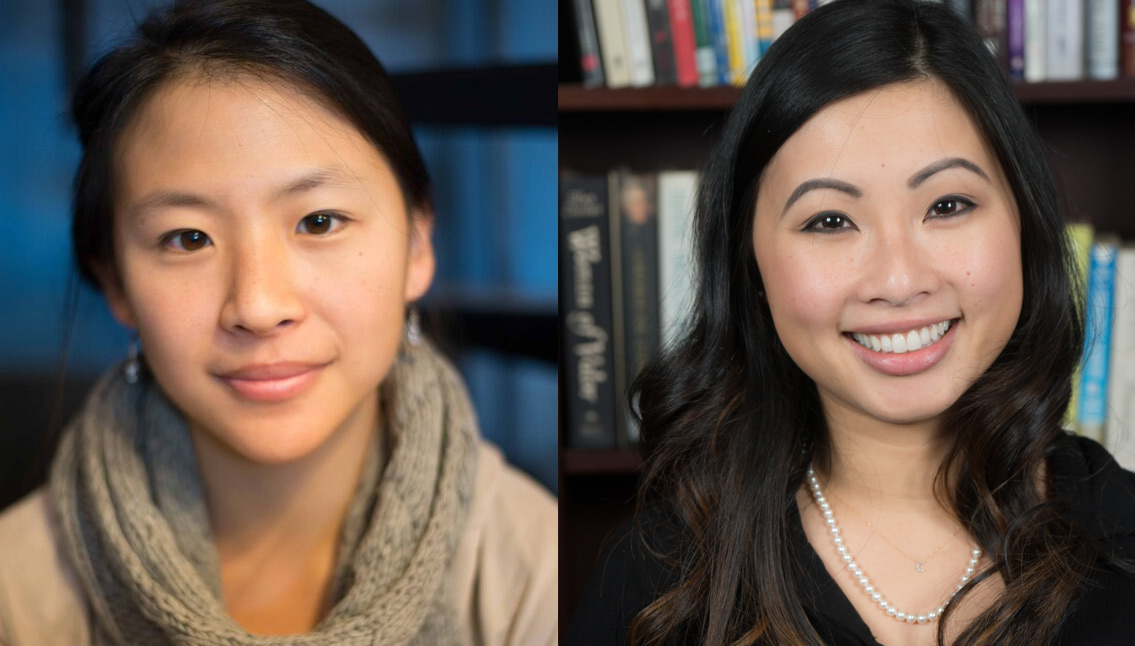Suicide is now the 10th-leading cause of death in the U.S. For every suicide, another 25 people make an attempt, and countless others contemplate it.
Yet perhaps the most alarming indication of a growing public health crisis is the sharp increase in suicidal thoughts and actions among young people. In the past 10 years, the number of children and teenagers in the U.S. who have been hospitalized for attempting or considering suicide has doubled, according to a study published in Pediatrics in June.
Youth mental health experts Cindy Huang, TC Assistant Professor of Counseling Psychology, and Christine Cha, TC Assistant Professor of Clinical Psychology, are taking the lead in unraveling the complex causes of youth suicide and suicide ideation, in designing assessments for individual risk among children and teens, and in developing novel interventions and prevention techniques.
Such a multi-pronged approach is surprisingly rare. “Asking what puts a person at risk is very different than asking ‘What can we do about that risk?’” says Cha. “With my focus on adolescent suicide and self-harm risk assessment and Cindy’s focus on youth mental health interventions, we realized we had a great opportunity to collaborate.”

TAPPING TC'S EXPERTISE Cha and Huang received a grant from TC's Provost's Investment Fund to work with other faculty members at the College.
And the two see even broader opportunities for synergies at TC around this very difficult topic. “So many faculty members across TC – in psychology, in education, in neuroscience, in the physical health fields – have expertise in youth mental health,” says Huang. To harness TC’s multidisciplinary strength in the field and develop visionary methods to help mitigate and solve some of the most pressing mental health issues facing youth today, Huang and Cha, with the support of TC’s Provost’s Investment Fund, launched the Child and Adolescent Mental Health Project (CAMHP) in 2017.
CAMHP’s three main goals are to:
- conduct collaborative research on issues pertaining to youth mental health;
- disseminate progress and results and build partnering opportunities throughout the College and with schools and organizations in the larger community;
- supplement student training and clinical practice.
CAMHP’s initial research project brings together Cha’s work researching youth suicide and self-harm risk, which is often related to family and parenting issues, with Huang’s work on testing and adapting the Family Check-Up – a well-documented, evidence-based intervention used to evaluate individual families’ psychological and interpersonal dynamics and to provide parents and caregivers with tools to help improve the well-being of their child.
“The Family Check-Up has never been used as a suicide or self-harm prevention intervention,” says Huang. “That’s an important niche that’s been missing.”
“We plan to test the Family Check-Up with a new population and ask questions that research shows may be more pertinent to self-injurious youth,” says Cha.
Huang and Cha hope that future CAMHP research projects will incorporate another critical yet underexplored factor in youth self-harm studies. “We want to focus on the lack of awareness of suicide risk and behavior among minority youth,” says Huang.
“Asking what puts a person at risk is very different than asking ‘What can we do about that risk?’ With my focus on adolescent suicide and self-harm risk assessment and Cindy’s focus on youth mental health interventions, we realized we had a great opportunity to collaborate.”
– Christine Cha
Cha points out that most suicide studies do not report on the race or ethnicity of their subjects. “If we don’t even report on race and ethnicity in these studies, then how can we say something substantial about who’s at risk?” she says. Support for ethnic and immigrant minorities and other potentially high-risk youths is already a central element of Cha’s and Huang’s individual research, and they intend to make that focus a key goal of CAMHP, particularly with regard to the initiative’s efforts to promote its work outside the TC community. For example, CAMHP has already established a strong partnership with Hamilton-Madison House, a large mental health and social services organization in Chinatown that primarily serves Chinese immigrants – among the fastest-growing and least studied immigrant populations in the country.
CAMHP also hosts a Brown Bag Series of faculty lectures and student showcases on a wide variety of aspects of youth mental health. Last year, six TC professors and eight TC students presented their groundbreaking research, representing programs that included Counseling & Clinical Psychology, School Psychology, Neuroscience & Education, Health Education, and Intellectual Disabilities & Autism. Several more speakers are lined up for this year, including scholars from Harvard Medical School, NYU and the University of Haifa.
“We know that so much social-emotional learning happens at home and at school,” said Huang. “By bringing together so many experts from so many fields, and by expanding our understanding dynamics in these different settings in culturally relevant ways, we’re getting a better sense of the ecological context of what’s happening to at-risk youth. That will inform what we do with interventions moving forward.”
